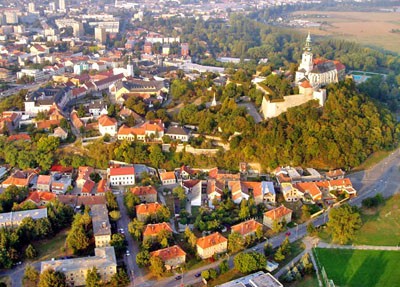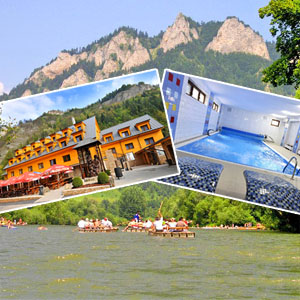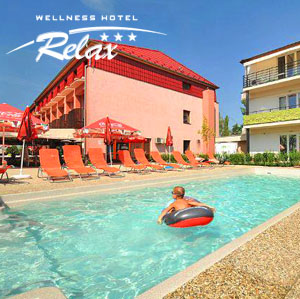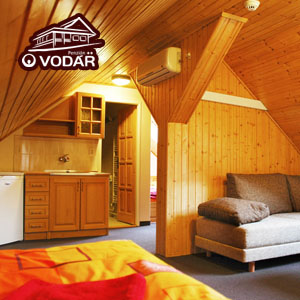Nitra
 Nitra (German: Neutra; Hungarian: Nyitra / Nyitria [archaic]) is a city in western Slovakia, situated at the foot of Zobor Mountain in the Nitra River valley. With a population of 85,000, it is the fifth largest city in Slovakia. Nitra is also one of the oldest cities in Slovakia and the country's earliest political and cultural center. Today, it is a seat of a kraj (Nitra Region) and an okres (Nitra District).
Nitra (German: Neutra; Hungarian: Nyitra / Nyitria [archaic]) is a city in western Slovakia, situated at the foot of Zobor Mountain in the Nitra River valley. With a population of 85,000, it is the fifth largest city in Slovakia. Nitra is also one of the oldest cities in Slovakia and the country's earliest political and cultural center. Today, it is a seat of a kraj (Nitra Region) and an okres (Nitra District).
History
Inhabited for 6,000 years, Nitra has been a city of extraordinary historic importance. A large Celtic settlement was founded in the 4th century BCE in the locality Martinský vrch. Nitra is later (396 CE) mentioned in connection to the Germanic tribe of Quadi, as their possible capital.
The first Slavs arrived in the 5th century. Nitra became the capital of the Principality of Nitra, the oldest known independent state in the present-day Slovakia.
The first known Christian church built by the Western or Eastern Slavs was consecrated in 828 at the seat of the ruling prince Pribina, and in the same year the town was first mentioned as Nitrawa. In 833, Pribina was ousted from Nitra by the Moravian prince Mojmír I and both principalities were united into the early medieval empire of Great Moravia. The Principality of Nitra was usually given to the heir of the Great Moravian throne as an appanage. But the practice eventually threatened unity of Great Moravia. Using rich resources of Nitra, both Prince Svätopluk I and Prince Svätopluk II revolted against their formal sovereigns. The level of autonomy they enjoyed was considerable, as documented by the Papal correspondence, addressing Svätopluk I of Nitra in the same way as two contemporaneous rulers of independent countries (Rastislav of Great Moravia, and Koceľ of the Balaton Principality).
The city reached its height during the reign of Svätopluk I, who was the prince of Nitra from the 850s to 871 and then the king of Great Moravia until 894. The first known Christian bishopric in Slovakia was established in Nitra in 880 (with Wiching as the bishop) and the first monastery in Slovakia was built on the Zobor Mountain during 880–881. During Svätopluk's rule, Nitra consisted of five large fortified settlements and twenty specialized craftsmen's villages, making it a real metropolis of its times. Several churches, for example in the Nitra Castle, Párovce, Nitrianska Blatnica, Lupka, Zobor, and Kostoľany pod Tribečom existed in and around today's Nitra during the 9th and 10th centuries. Located beyond the city limits are the Great Moravian settlements of Chrenová, Lupka, Branč, Vráble and Zlaté Moravce.
After the break-up of Great Moravia in 906/907, Nitra was conquered by a Magyar chieftain Lehel around 925. The Great Moravian appanage system was adopted by the Árpád dynasty of the newly established Kingdom of Hungary. As with much of the present-day Slovakia, Nitra was conquered by the Polish king Boleslaus I in 1001 and stayed as part of Poland until 1030. As the seat of heir of the dynasty, Nitra kept its autonomous status until 1108. Even after the abolishment of the principality, Nitra remained the capital of the Nitra county and a seat of a bishop (since 1110). The town survived the invasion of Mongols in 1241. In 1248, Béla IV gave Nitra the privileges of a free royal town. However, the privileges lasted only for 40 years and became a landlord's town. During the course of time, Nitra was controlled by Matthew Csák in the early 14th century, was affected by insurrections against Sigismund of Luxembourg and was a target of Hussite attacks in the 15th century. After the Hungarian defeat at the Battle of Mohács in 1526 and subsequent Ottoman advances into the Hungarian territory, Nitra was under threat of Ottoman attacks. They failed to capture three times, before they conquered by it in 1663 and became center of the Litra sanjak, which bounded to Uyvar eyalet.
The town was reconquered in 1685. The town was also affected by anti-Habsburg uprisings, from Stephen Bocskay and Gabriel Bethlen uprisings in the 17th century to the Kuruc uprisings from 1703 to 1711, and the town burned out in 1708 as a result of fights. It was renovated in the 18th century in the Baroque style. As a consequence of the Revolutions of 1848 and related events, Nitra got its own independent self-government for the first time since 1288 and wasn't dependent on the Diocese of Nitra and its bishops.] Until then an agricultural and handicraft town, Nitra also started to industrialize. Until World War I, distillery, agricultural machines factory, brewery, dairy and other works were established. The first indirect connection to a railway was a road built in 1850 to the closest station in Trnovec nad Váhom. The railway finally arrived to Nitra in 1876, when a connection from Šurany was built. Later, lines were built to Topoľčany, Hlohovec and Nové Zámky. As a part of Magyarization, Nitra was from 1883 to 1919 seat of the Upper Hungarian Teaching Association (FEMKE), a government-sponsored association whose main goal was to apply Magyarization policies on Slovaks.
After World War I and disintegration of Austria-Hungary, the Czechoslovak Legions occupied the town on 10 December 1918 and became part of Czechoslovakia. Nitra continued to be the seat of the Nitra county, until it was dissolved in 1928. After break-up of Czechoslovakia, Nitra became a part of the First Slovak Republic and became again a seat of Nitra county until 1945, when it was conquered by the Soviet Red Army and Czechoslovakia was restored. The Communist period from 1948 to 1989 was marked by extensive growth, building of house estates and annexing of formerly independent villages. After the Velvet Revolution of 1989 and dissolution of Czechoslovakia, Nitra became part of newly established Slovakia and became a seat of the Nitra Region in 1996.









